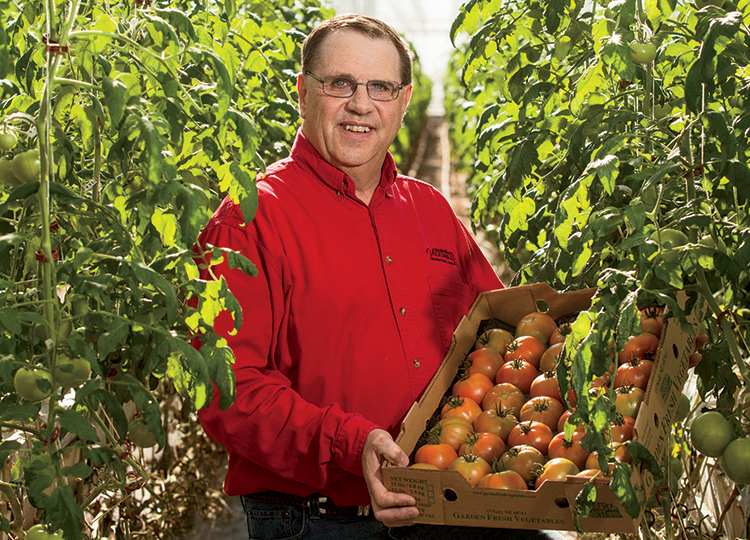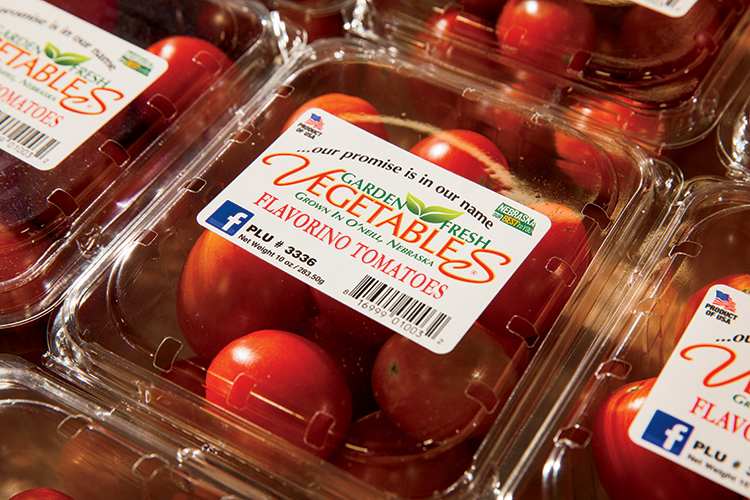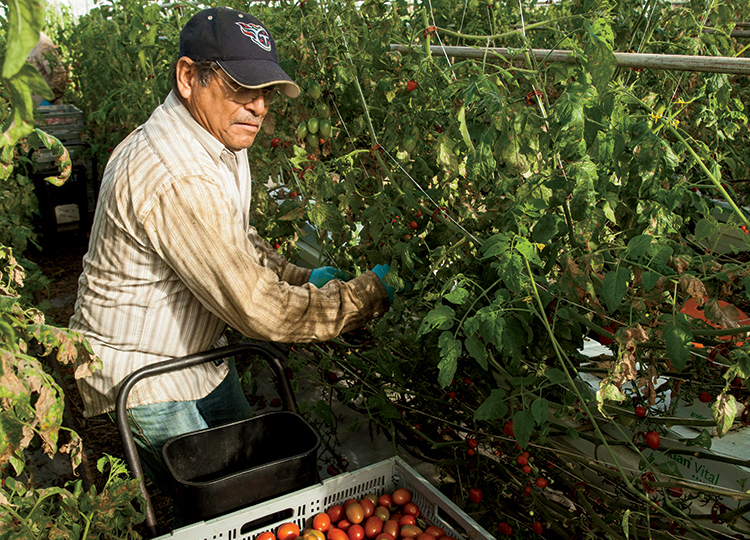Home > Nebraska > Nebraska Crops & Livestock > The Time is Ripe for Nebraska Produce
The Time is Ripe for Nebraska Produce

operating under the name Suntastic, grows tomatoes and cucumbers year-round on 24 acres of greenhouses.
Whether you are seeking fresh sweet corn, vine-ripened tomatoes or green beans that “pop” when you snap them, Nebraska’s farmers’ markets, roadside stands and U-pick operations offer consumers options as destinations for locally grown fresh produce.
Casey Foster, an agriculture program coordinator with the Nebraska Department of Agriculture, says the popularity of such operations has continued to increase in Nebraska each year.
“In 2013, Nebraska had over 81 farmers’ markets across the state, an increase of 42 markets in the last decade alone,” says Foster. “We’ve also seen a tremendous increase in the number of fresh produce growers across Nebraska, with nearly 340 growers of fresh produce, using roughly 23,000 acres of land and bringing in produce valued at about $63 million last year alone.”

According to Foster, the increase can be attributed to the popularity of the local food movement that continues to grow in Nebraska and across the nation.
Nebraska offers fresh produce growers a perfect mix of fertile land, ample water and open space to grow high quality fruits and vegetables for consumers. Apples, grapes and berries of all kinds are popular fruits grown in the state and are typically available from June through October.
Vegetable production in the state varies greatly and includes items like sweet corn, tomatoes, zucchini and cabbage. Some vegetables, like asparagus and rhubarb, are available in April, with the vast majority of vegetables available in June through October.

“There is a large range of fresh fruit and vegetables available to consumers in the summer months, but what you may not realize is that many of Nebraska’s producers are looking for ways to expand their crop production year-round to satisfy consumer demand,” says Foster.
Producers can use various practices and technologies to extend their produce growing seasons, including the use of plastic mulches, floating row covers, greenhouses and high tunnels (hoop shaped frames covered in plastic). Foster says these methods are becoming more popular in Nebraska and are enabling local producers to raise vegetables in the months when the weather isn’t suited for outdoor production.

Marv Fritz is one example of a Nebraska producer who is helping to fulfill the year-round demand for fresh, local produce. Garden Fresh Vegetables, now operating under the name Suntastic, utilizes greenhouses as well as hydroponics (growing plants in water instead of soil) on its 24-acre plot in O’Neill, where they grow between 6 and 7 million pounds of fruits and vegetables each year. O’Neill is located in Holt County, in north-central Nebraska.
“Consumers can find our tomatoes, under the brand name ‘Suntastic,’ in the produce department of grocery stores within 24 to 48 hours (of being picked),” Fritz says. “That means the consumer gets a fresher product and retailers have flexibility in shelf life and guaranteed year round availability, all of which helps them to have less product loss and happier customers.”
In Nebraska, the tomatoes and cucumbers grown in O’Neill can be found in many grocery stores, such as Super Saver, Hy-Vee and Wal-Mart, as well as many other locally-owned stores.
“Nebraska stores have been good about working with local producers to promote local consumption and to support the local community, the farmer and the agricultural economy,” Foster says. “That support and the support of the consumer in buying local products is important because it keeps the value of the farm dollar there in those rural communities, which is increasingly important to the well-being of small-town America.”



